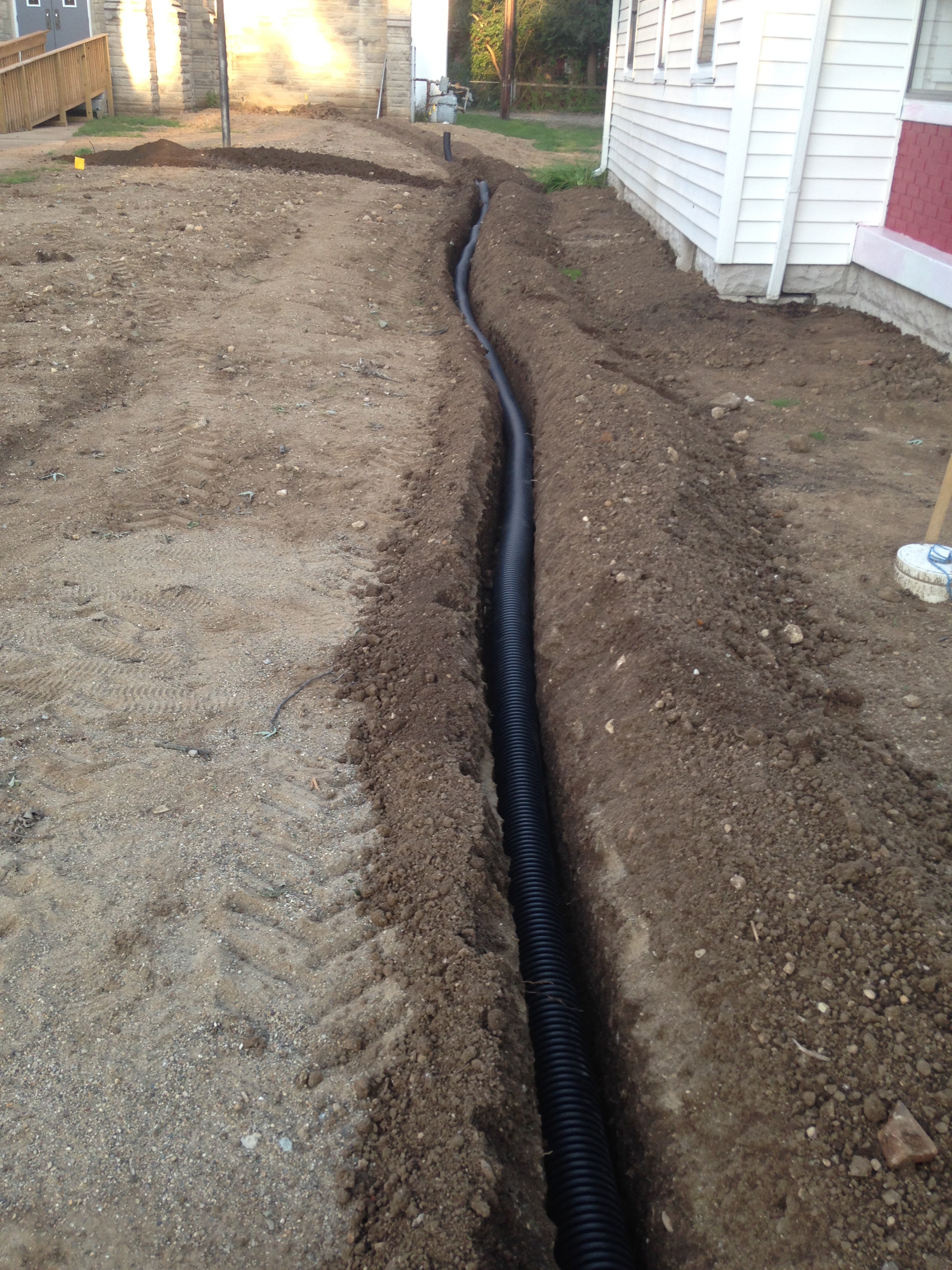French Drains
If your property residential, commercial or industrial has guttering or downspouts, you should strongly consider installing French Drains. In general most buildings have guttering and downspouts to remove water from the property and water for what it is, is good and we need it to live. However, if there is too much water and it comes in ways that we can not use all of it immediately, then it can cause problems such as erosion, flooding, molding and extensive damage to property. This is where the need for installing French Drainage system becomes an extreme necessity.
What is a French Drain?
 So what is a French drain? A French drain is a pipe placed in the ground to collect rainwater runoff. French drains are often used in yards and in basements that have drainage problems. French drains are used to transport excess water to low lying areas where the water will do no damage. French drains are also used around the foundations of all properties to direct underground water away from the foundation of the building.
So what is a French drain? A French drain is a pipe placed in the ground to collect rainwater runoff. French drains are often used in yards and in basements that have drainage problems. French drains are used to transport excess water to low lying areas where the water will do no damage. French drains are also used around the foundations of all properties to direct underground water away from the foundation of the building.
Signs to look for before installing French Drains
Signs to look for before installing French Drains and who can benefit from it.
- If you have water drainage problems on your property, a French drain is an effective and straightforward drainage system that can help rid your property of excess water.
- Soggy lawns that persist after rainfalls with standing water.
- Erosion around building foundation.
- Flooding of the basement.
- Peeling paint on basement walls, also present of mold and foul moldy odor.
- Plants that are dying around the property.
- Your yard includes a retaining wall on a hillside.
How does a French drain work?
A French drain usually consists of two types of pipes; a wide 4-8" pipe perforated with holes that has been wrapped with fabric to prevent dirt or sand from getting into to it and buried in the ground.This type of French Drain acts like a sponge and sucks the water through peat gravel into the frabric lined pipe and sends it far away from the flooding areas. The other is a solid wide pipe which also allow water to flow through it to a lower area of the property. French Drains are usually angled downward to keep water flowing through the pipe and away from affected flooding areas. To enable water to flow through the ground to the drain, gravel is placed on top of the pipe, because water flows through gravel more easily than soil.
What are the advantages of a French Drain System?
If you’re thinking about getting a French drain installed on your property, you’ll want to know what makes a French drain better than other drainage options. Some of the advantages of this type of drain include:
- French drains have no moving parts, which can make them less likely to break down or stop working.
- If installed properly by a qualified plumber, a French drain can last for a very long time.
- In some circumstances, shallow French drains can be easy to install as a DIY project.
Some minor issues to be aware of:
- Although French drains have many good qualities, they are not entirely without issues. For example: because they’re buried in the ground, French drains can be difficult to repair when they develop problems.
- French drain installation, if placed deep in the ground around pre-existing structures, can be expensive.
French Drain Installation
If you’re thinking about installing a French drain, what should you do to get started?
- Before a French drain can be installed call out to have all utilities marked as they can be cut during the installation process.
- The exact path for the drain must be planned.
- The drain must run through the areas where water is the most problematic while avoiding exterior water pipes and sewer channels.
- The exit point of the French drain should be a sunny, low-lying area. The exit should be directed away from any neighboring properties to avoid flooding someone else’s property.
- Work with your professional to plan a sensible path for your French drain system.
Knowing what a French drain is and how it works can help you decide whether or not this type of drainage system is right for your residence, commercial or industrial building.
